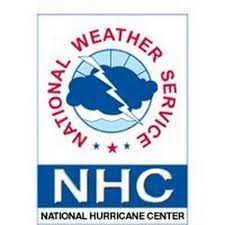The National Hurricane Center

he latest update from the National Hurricane Center has Hurricane Lani approximately 432 miles due north of the Dominican Republic and 520 miles due east of Miami, FL. Hurricane Lani continues to strengthen
The National Hurricane Center
RAT #6 Initial Post PILOT PROJECT WEATHER EVENT STATUS The latest update from the National Hurricane Center has Hurricane Lani approximately 432 miles due north of the Dominican Republic and 520 miles due east of Miami, FL. Hurricane Lani continues to strengthen as a Category 2 hurricane but now with sustained wind speeds of 85-90 miles per hour. Modeling data indicates that Hurricane Lani will continue to gain strength while maintaining a north-northwest direction. This direction of travel continues to run between The Bahamas and Bermuda but basically in open water with no threat to any populated land mass.
The National Hurricane Center
Based on the future forecasts, the National Hurricane Center is now predicting that Hurricane Lani will make U.S. east coast landfall around the along the North Carolina coast centered around the Wilmington, NC locality. Hurricane Lani is expected to be at Category 3 at landfall. The timing of Hurricane Lani’s landfall appears to be between 3:00 a.m. to 7:00 a.m. East coast time. BACKGROUND The OPPA Associate Administrator’s staff has sent a tasker to the EMRAAAS Pilot Project Team requesting an informational point paper addressing the type of threats and/or hazards that the Team is considering as part of its emergency operations planning process.
The National Hurricane Center
The OPPA has requested this information in response to an inquiry from the FEMA Administrator that the information be briefed at the next FEMA Administrator staff meeting. As part of the EMRAAS Pilot Project Team tasking, the FEMA Administrator has requested that those threats and/or hazards identified by the EMRAAS Pilot Project Team as being appropriate for Hurricane Lani’s pending landfall around the Wilmington, NC area be listed in priority order. Such a prioritization approach will help applicable FEMA offices and external stakeholders to begin arranging their resources in accordance with the EMRAAS Pilot Project Team’s recommended prioritization approach.
The National Hurricane Center
RAPID ACTION TASKER #6 The following tasking is structured along the three-step process outlined within FEMA’s threat and hazard identification approach. This three-step process is detailed in the following three documents which serve as good sources for starting your deliberations. Threat and Hazard Identification and Risk Assessment (THIRA) and Stakeholder Preparedness Review (SPR) Guide, Comprehensive Preparedness Guide (CPG) 201 (3rd ed.), May 2018, pages 10-22 2019 National Threat and Hazard Identification and Risk Assessment (THIRA): Overview and Methodology, July 25, 2019, pages 5-13 and Appendix E Core Capability Development Sheets, 2020 Note that the three-step process mentioned above is a recommendation.
The National Hurricane Center
You have the flexibility to answer the three steps within Part 2 of the below tasking using additional sources of information. That said, if using a different approach other than noted three-step process, ensure your alternative approach captures the essence of what is addressed as part of the three-step process. Also, while the three-step process is a recommended approach, you will potentially need to conduct some additional research to “fill in” the details associated with one or more of the following steps. Part 1: Provide a brief background discussion on FEMA’s Threat and Hazard Identification and Risk Assessment (THIRA) process. What’s the overall purpose of the THIRA process?
The National Hurricane Center
Part 2: Use the following three-step process (or an alternative of your choosing) to provide the requested information as part of this tasking from OPPA leadership. Step 1: Identify Threats and Hazards of Concern. Based on your research, personal experiences, and the specific Hurricane Lani scenario, discuss your thoughts on what you believe to be a top threat and/or hazard to the Wilmington, NC area from a Category 3 hurricane. Researching previous hurricanes may provide some insights into threat and/or hazard expectation for the Wilmington, NC locality. Step 2: Give Threat and Hazards Context.
The National Hurricane Center
Your context descriptions should be framed as a narrative that’s specific to the pending Hurricane Lani landfall indicating what factors would make your threats/hazards especially challenging such as location, magnitude, time of the incident (landfall projected to be between 3:00 a.m. and 7:00 a.m. East coast time), and cascading effects. Step 3: Establish Capability Targets. Your capability targets should describe the level of capability that the community should plan to work toward achieving in terms of being impacted by a Category 3 hurricane (i.e., Hurricane Lani) making landfall in the locality of Wilmington, NC.
The National Hurricane Center
For the purposes of our tasking, the Capability Targets formulated in Appendix E, Table 6: Response Mission Area Standardized Targets as well as the Response section of the Core Capability Development Sheets should prove informative for this step. The following links serve as a starting point for some relevant information to this tasking. THIRA & SPR: CPG201 v3, pages 10-22 2019 THIRA Overview & Methodology, pages 5-13 and Appendix E Core Capability Development Sheets: Prevention, pages 17-39 2021 National Preparedness Report DELIVERABLE FORMAT Post your answer with supporting in-text citations and a reference list (in APA 7th edition format) https://youtu.be/GA1oQvKMS3w
Attached Files
|


 +1 650 405 4067
+1 650 405 4067

